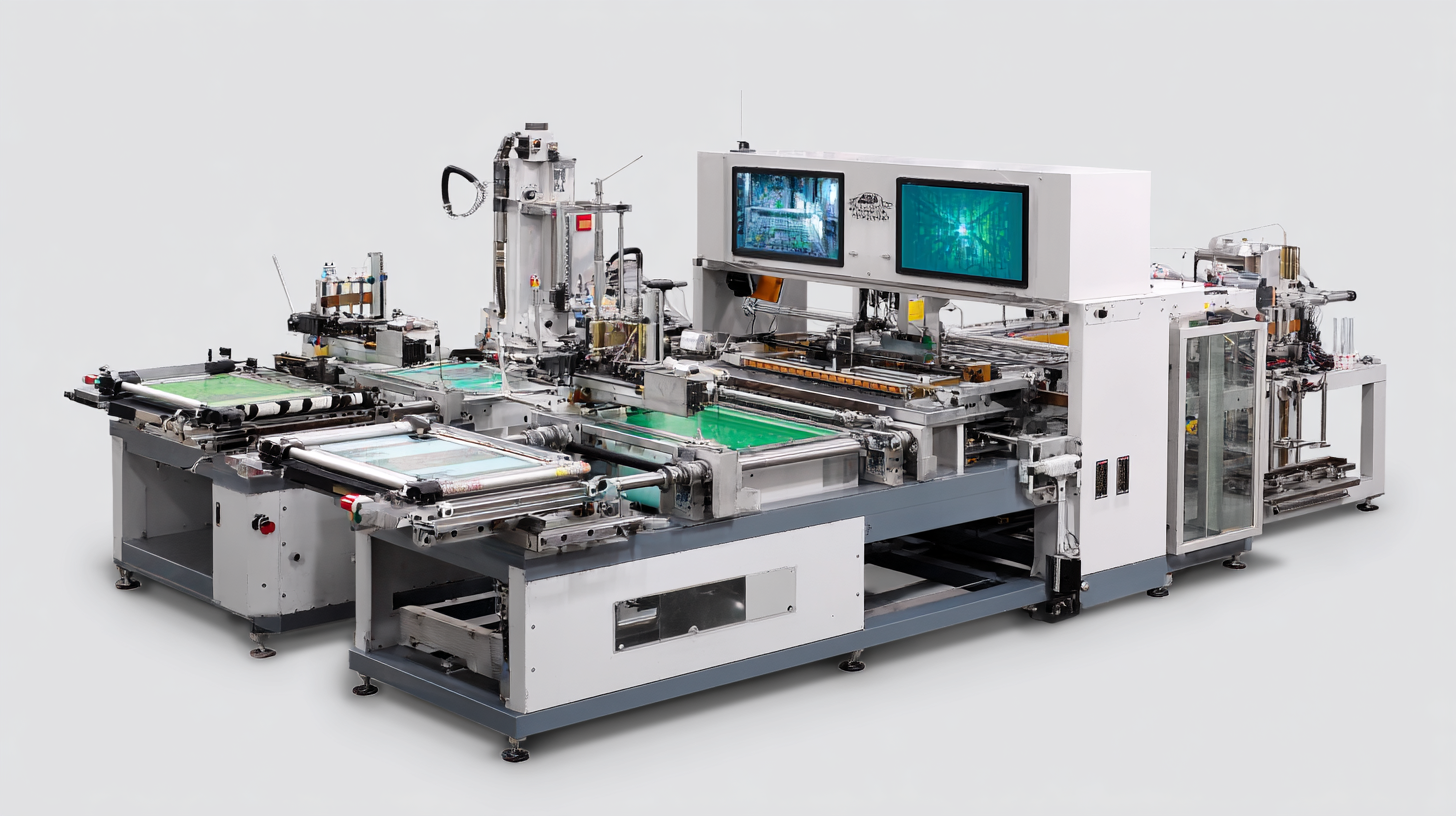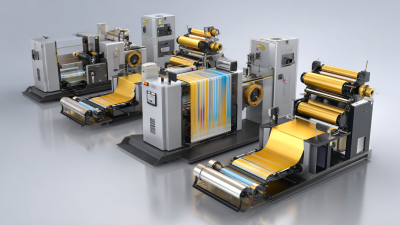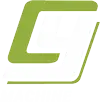In the rapidly evolving world of graphic printing, the demand for high-quality, efficient production is at an all-time high. According to a report by Smithers Pira, the global screen printing market is projected to reach approximately $11 billion by 2025, driven by advancements in technology and increasing applications across various sectors, including textiles, electronics, and packaging. These changes emphasize the need for businesses to invest in cutting-edge screen printing machines that can meet high-volume demands while maintaining exceptional quality.

The right screen printing machine can significantly enhance productivity and efficiency, enabling businesses to stay competitive in a saturated market. In massive production environments, the ability to produce large batches quickly without sacrificing quality is paramount. Industry statistics reveal that high-performance machines have the potential to increase output by up to 40% compared to previous generations. This leap in production capability not only optimizes workflow but also reduces waste, aligning with sustainability goals that are increasingly important in today's printing landscape.
As we delve into the top five screen printing machines for 2025, we will explore technologies that exemplify innovation and efficiency. These machines are designed to empower graphic printing businesses, accommodating a diverse range of applications and volume requirements, ultimately shaping the future of the industry.
Choosing the right screen printing machine is crucial for achieving high volume production and efficiency in graphic printing. As demand for printed materials continues to grow, businesses need equipment that can keep pace without sacrificing quality. A well-chosen machine not only streamlines the production process but also minimizes downtime caused by equipment failure or inefficiencies. This directly impacts a company's bottom line, making the selection process vital to operational success.
Different machines offer varying features that cater to specific production needs. Factors such as automation, screen size versatility, and print speed are essential considerations when selecting a screen printing machine for high-volume operations. Investing in a machine that incorporates advanced technology can lead to substantial time savings, and improved output consistency. Ultimately, the right choice enhances overall productivity, enabling businesses to meet client demands while ensuring high-quality results in a competitive market.
When selecting a screen printing machine for high-volume graphic production, certain features are essential for maximizing efficiency and output quality. Firstly, a robust and adjustable registration system is crucial; it ensures precise alignment of artwork, reducing waste and reprint costs. Look for machines that offer automatic registration capabilities to streamline your workflow and enhance productivity.

Moreover, consider the machine's speed and throughput. High-efficiency machines can produce more prints per hour, making them ideal for businesses with large orders. Features such as quick changeovers and versatile platens can significantly reduce downtime during production. Investing in machines with advanced ink delivery systems helps maintain consistent color quality and reduces ink waste, further contributing to operational efficiency.
Tips: Always check for user-friendly interfaces that simplify operation and maintenance. Training staff on how to effectively use these advanced machines can also enhance overall production efficiency. Additionally, evaluating the reliability of customer support from manufacturers is vital—this ensures any technical issues can be quickly resolved to keep your operations running smoothly.
As the graphic printing industry continues to evolve, the demand for efficient high-volume screen printing machines is on the rise. A comparative analysis of the leading screen printing machines for 2025 reveals a marketplace poised for innovation, driven by advancements in technology and efficiency. The printing machinery market is forecasted to reach USD 39.6 billion by 2035, with a compound annual growth rate (CAGR) of 4.7% between 2025 and 2035, indicating a robust growth trajectory influenced by these cutting-edge machines.
Recent trends highlight a substantial shift in the market dynamics of custom printing. The global packaging printing market is projected to grow from USD 352.1 billion in 2020 to approximately USD 433.4 billion by 2025, expanding at a promising rate. This growth is likely to spur further innovations in screen printing technology, allowing businesses to meet escalating consumer demands efficiently. Furthermore, as companies shift towards strategic investments in technology, those investing in advanced screen printing solutions will not only enhance their production capabilities but also gain a competitive edge in the marketplace.

The automation of processes in screen printing is revolutionizing the industry by significantly enhancing production efficiency. By integrating advanced technologies, companies can streamline their workflows, reduce labor costs, and minimize human errors. Automated printing machines not only accelerate the printing process but also ensure consistent quality across large volumes of output, making them ideal for high-demand environments. This transition to automation allows businesses to meet urgent deadlines without compromising on the quality that their clients expect.
In the evolving landscape of graphic printing, staying ahead of industry trends is crucial. As the textile printing market continues to expand, driven by its projected growth from USD 25.8 billion in 2024 to USD 56.7 billion by 2033, businesses must adapt to these changes. Innovations in printing technology, such as automation, are vital for companies looking to capitalize on emerging opportunities. By embracing these advancements, businesses can not only improve their operational efficiency but also enhance their competitiveness in a fast-paced market.
Investing in high-volume screen printing equipment requires a thorough evaluation of cost-benefit considerations. While the initial purchase price of advanced machines may be steep, the long-term gains in efficiency and output can outweigh these upfront costs. For businesses engaged in large-scale production, the advantages of faster printing speeds, automated features, and reduced manual labor can significantly enhance overall productivity. Additionally, enhanced print quality and consistency not only improve customer satisfaction but can also lead to repeat business, further justifying the investment.
Moreover, when considering the cost-benefit analysis, it’s essential to factor in maintenance and operating expenses. High-quality machines often come with better support and extended warranties, which can mitigate future costs. Furthermore, investing in energy-efficient models can lead to substantial savings over time, both in utility bills and in environmentally sustainable practices. Ultimately, the right choice in screen printing machinery should align with business goals, ensuring that the return on investment is maximized through increased efficiency and superior output quality.
| Machine Model | Max Speed (prints/hr) | Print Area (inches) | Number of Colors | Annual Maintenance Cost | Investment Cost |
|---|---|---|---|---|---|
| Model A | 1200 | 24 x 36 | 6 | $1,500 | $25,000 |
| Model B | 1000 | 20 x 28 | 4 | $1,200 | $18,000 |
| Model C | 1500 | 36 x 48 | 8 | $1,800 | $30,000 |
| Model D | 800 | 18 x 24 | 3 | $1,000 | $15,000 |
| Model E | 1100 | 30 x 40 | 5 | $1,600 | $22,500 |






